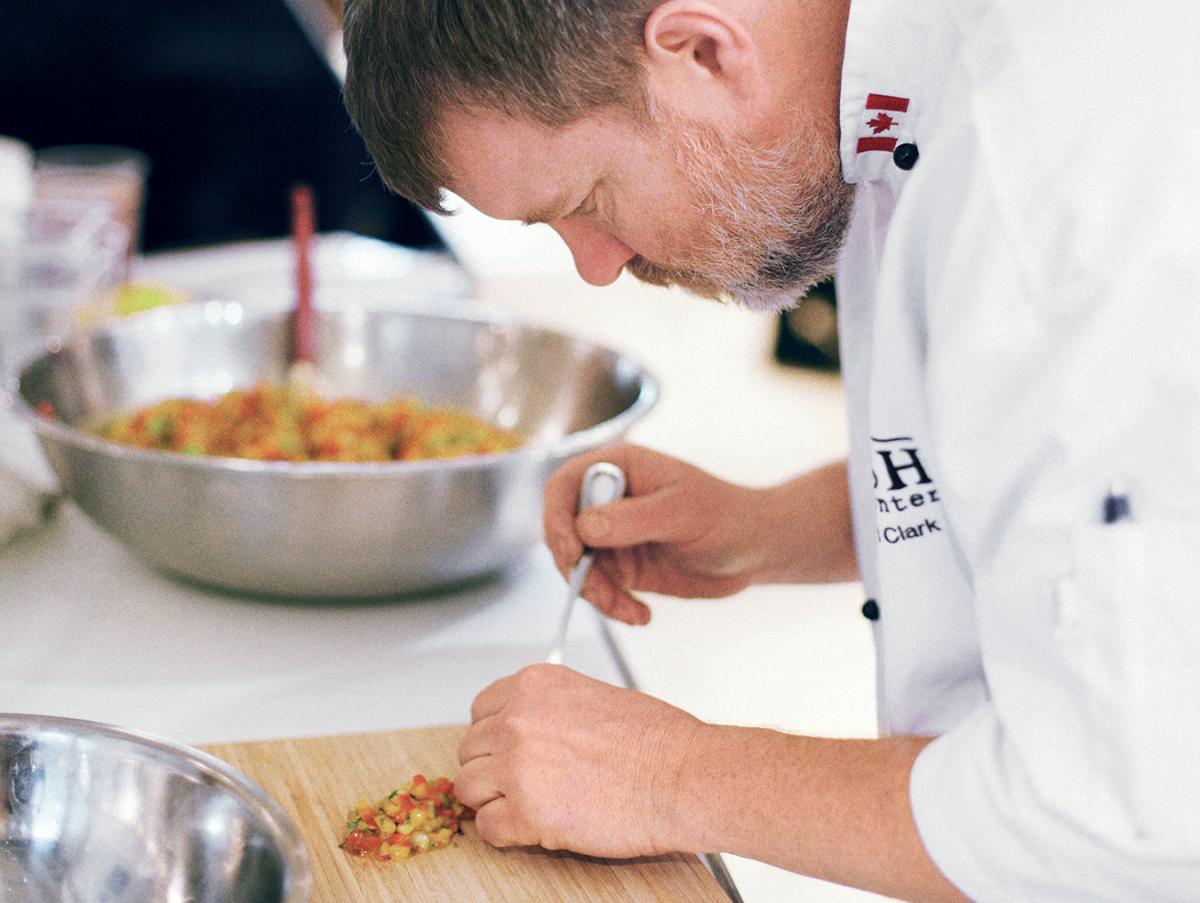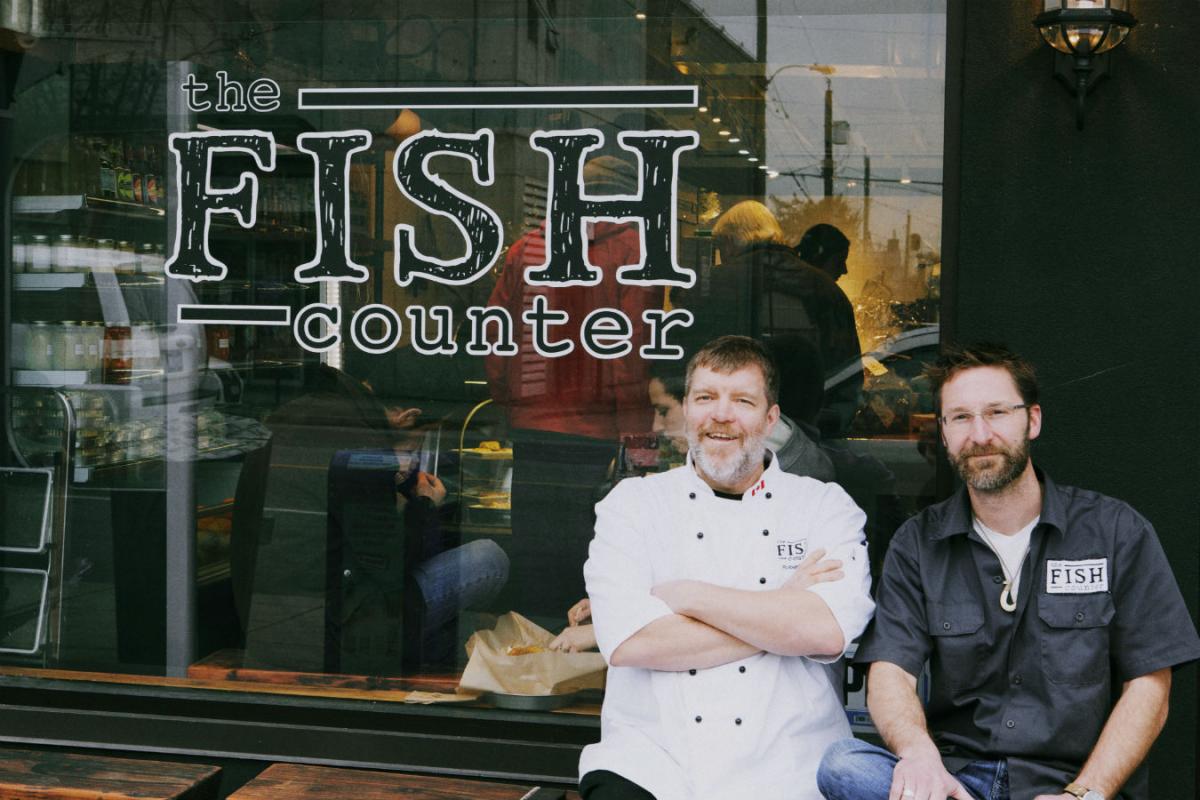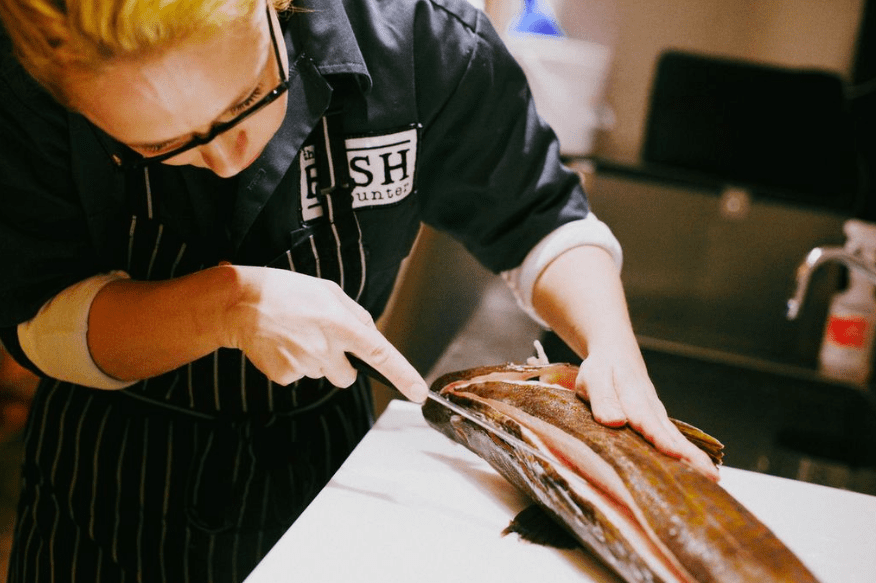September 26, 2018
Is my seafood really sustainable? How mislabelling leaves consumers cheated and confused
Estimated reading time: 0 minutes
BY: Robert Clark
Topics: Stop Seafood Fraud
What’s for dinner tonight at my house? Likely seafood. What type will depend on the time of year, the weather, my mood and who I am eating with; all are factors that change what ingredients I like to work with. But if you were to happen to catch me on any given day in the spring time when I am looking for comfort food – something that reminds me of home – I would likely be cooking salmon, maybe paired with fiddleheads and simply boiled potatoes. Salmon takes me back to my childhood, growing up in Quebec’s Gaspe Peninsula, fishing wild Atlantic salmon on the York River with my father. Feet in the water, my line cast, waiting for a bite, allowing nature to provide for us. Those are my roots, the ones that I continue to be inspired by decades later as I serve sustainable seafood to customers in Vancouver, B.C. Many Canadians- from small communities along the coast of Quebec, families in the Maritimes, every single person in Newfoundland to Canadians living across the country including my friends and neighbours here in B.C. – can relate to this sense of place through seafood. It connects us to our family and friends and to our heritage. The choices we make when consuming seafood are a reflection of our values.

Headless fish, what are you really eating?
Awareness about the importance of choosing seafood that is sustainably harvested has increased over the years, and I’ve been a champion of it from the very beginning. But mislabelling and a lack of traceability in the supply chain continue to make it challenging for consumers to be fully informed about their food choices. At my store, The Fish Counter, people come in wanting to enjoy seafood in a way that is environmentally responsible and healthy. My customers share a love of the ocean and a passion for delicious food, but they struggle to make sustainable choices. I often talk to customers who want to buy salmon, for example, but they see it at a lower prices in other places, creating confusion in the market. Is the other salmon they are looking at farmed or wild, Canadian or international? There is no way for them to really know if they are comparing the same product. Canadian labelling laws don’t make clear what you are really paying for. With other proteins, like beef, you see what grade it is and where it was inspected and you know the quality because this information is provided to you. In Canada, the reverse happens with seafood: there is no information on the label and often the heads of the fish are cut off so you don’t know what species it is. The identity gets hidden along with all of the dirty secrets it may have, like destructive fishing practices or even negative impacts to your health.

Race towards low quality seafood
When I first moved to Vancouver, I spent a lot of time inspecting the seafood I was purchasing for the restaurants I was working at. What I saw was shocking. In less than a decade I witnessed a big decrease in the quality of seafood. We went from seeing four foot fillets of Chilean sea bass with a beautiful white colour in the 1990s to ten years later an unhealthy looking gray fillet less than a foot long. Something was wrong and it lead me to question whether the seafood I was buying was really what it was labeled as. I started to investigate and was really discouraged by what I found. The food industry was on a path of increasingly supporting cheaper and poorer quality fish, with steep consequences for the oceans and our health. How we got to this point is a bit of a race to the bottom. Chefs, like myself, would try to find something like ahi tuna, calling up one supplier and ordering it, but the next week a different supplier would offer a price that was a few cents less so you would buy your tuna from them only to have the first supplier call you back and offer an even cheaper price. These suppliers were offering lower quality fish as substitutes, while still calling it ahi tuna. This is something that is happening all throughout the seafood supply chain. Mislabelling is a way to launder fish that’s been harvested illegally, passing off unsuitable seafood as if it were a good choice for ocean health. It’s deceptive, and as a consumer you should care because you are getting ripped off.

What can you do? Reconnect to that inquisitive nature we had as children
Labeling on seafood should include the full Latin name of the species as well as where and how it was caught. This is information consumers have the right to know. It’s also the best way for us all to be informed about our food choices and able to eat in ways that are sustainable for the long-term health of the ocean. You can help make this happen by calling on the Canadian Food Inspection Agency to implement boat-to-plate traceability, sign Oceana Canada’s petition here. Other things you can do as a consumer is to ask questions, get to know your where your seafood was caught and by whom. We can all make healthier choices for the planet and for ourselves. The path towards this is fairly simple: reconnect to that inquisitive nature we had as children, ask questions about your seafood, engage the people around you in conversations about sustainability and food traceability and, of course, eat your vegetables.
Robert Clark is a chef, author, small business owner and sustainable seafood guru. He is an advocate of authentic living, sustainable seafood and transparency in food systems. Rob helped to grandfather the sustainable seafood movement in Canada. He is the proud recipient of the Murray A. Newman Award for his conservation efforts.
Photo Credit: Charles Thompson

